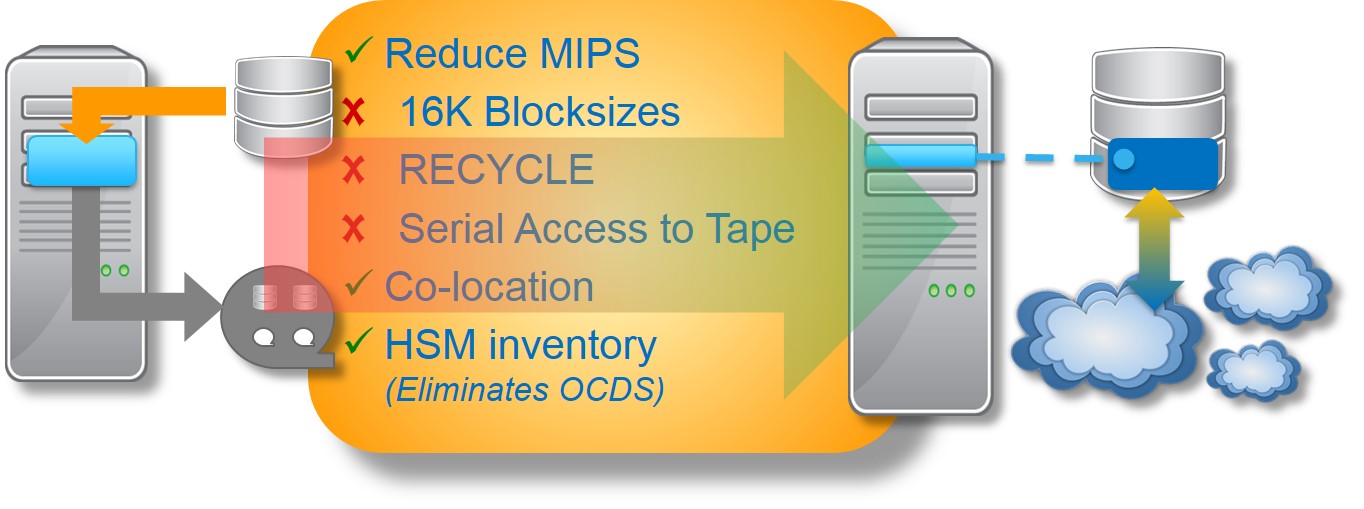For nearly forty years, offloading inactive z/OS data from online primary storage to offline secondary storage has required the z Server to read data from primary storage, reblock it, and then write it to secondary storage. This process may compete with critical batch jobs, or even production workloads, for valuable server MIPS.
IBM Systems introduces DS8000 transparent cloud tiering, which provides the capability to archive z/OS data to cloud object storage directly from a DS8000 disk control unit, without the data passing through a z Systems server. As today, the data automatically recalls to primary online storage when it is referenced. This capability is the next leap towards providing z Systems clients with serverless data movement through their entire storage hierarchy. Prior to this support, serverless data movement was limited to online storage tiers, through FlashCopy and Easy Tiers, or equivalent functionality.
 Transparent cloud tiering enables:
Transparent cloud tiering enables:
- MIPS reduction during data archive processing by offloading data movement to the storage controller. This adds flexibility to the DFSMShsm migration processing window to be able to extend to time frames which are not feasible today.
- Middleware exploitation by seamlessly integrating the solution into existing DFSMS functionality:
- Offline, point-in-time DB2 Image Copies (FlashCopy followed by transparent cloud tiering).
- Simplified storage environments.
- Maintaining both online and offline storage tiers can strain the resources of small sized clients. Transparent cloud tiering enables these clients to outsource their offline storage resources to a third party cloud storage provider, such as IBM's Cloud Object Storage.
- Clients can now maintain a single, common offline cloud storage tier for both their Distributed and z/OS data. (The z/OS data continues to only be accessible from z/OS).
- Clients can offload just a subset of their archive data to cloud object storage in order to achieve a minimal TCO for inactive data. (This is the expected first use case, utilizing an on-premise, private cloud object store. This can also be implemented via IBM’s Cloud Object Storage solution).
- Technical advantages over existing z/OS data archive:
- Eliminates the DFSMShsm 16K tape block size constraint
- Eliminates DFSMShsm recycle processing
- Eliminates single threaded tape recalls
- Eliminates the DFSMShsm offline device inventory
- Migrated data set co-location by policy
 Due to the scope of this fundamental change to z/OS data archiving, it will be rolled out iteratively. The initial, basic support is available on z/OS V2R1 and DS8870 7.5. This support enables clients to introduce cloud object storage into their z Systems environment and to explore the basic capabilities.
Due to the scope of this fundamental change to z/OS data archiving, it will be rolled out iteratively. The initial, basic support is available on z/OS V2R1 and DS8870 7.5. This support enables clients to introduce cloud object storage into their z Systems environment and to explore the basic capabilities.
For more information: